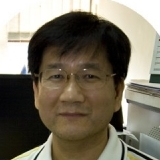Advances in GaN Crystals and Their Applications
A special issue of Crystals (ISSN 2073-4352). This special issue belongs to the section "Inorganic Crystalline Materials".
Deadline for manuscript submissions: closed (30 September 2017) | Viewed by 40419
Special Issue Editor
Interests: semiconductor physics; condensed matter physics; magnetism physics
Special Issues, Collections and Topics in MDPI journals
Special Issue Information
Dear Colleagues,
The wide bandgap, GaN, has been extensively investigated and applied in optoelectronic devices and high electron mobility transistors. The bandgap of (In,Al)GaN alloy compound covers the entire solar radiation spectrum from ultraviolet to infrared rays. Furthermore, the Stark effect induced by piezoelectric and the spontaneous electric field on polar GaN epi-film creates fundamental properties in optoelectronic applications. The nanostructure of GaN can be grown by advanced techniques, such as plasma-assisted molecular beam epitaxy, metal–organic chemical vapor deposition, etc. The nanostructured GaN opens a new area to optimize quantum properties in applications for high-efficient optoelectronic devices.
We invite investigators to contribute original articles on their current study of the GaN structure, growth technology, crystal properties, and their applications. Both experimental and theoretical papers are welcome.
Potential topics include without being limited to:
-
Theory, modelling of GaN-based thin films, nanostructures and heterostructures,
-
Fabrication, growth mechanism of GaN epilayers, bulk, heterostructure and nanostructure by MBE, MOCVE, HVPE, ALD, ....
-
Characterization of GaN epilayer, bulk, heterostructure and nanostructure by TEM, PL, CL, Raman, SIMS, XPS, ....
-
Application, processing of GaN-based devices, such as light-emitting diodes (LED), solar cells, laser diodes (LD), high electron mobility transistors (HEMT), detectors, ....
Prof. Dr. Ikai Lo
Guest Editor
Manuscript Submission Information
Manuscripts should be submitted online at www.mdpi.com by registering and logging in to this website. Once you are registered, click here to go to the submission form. Manuscripts can be submitted until the deadline. All submissions that pass pre-check are peer-reviewed. Accepted papers will be published continuously in the journal (as soon as accepted) and will be listed together on the special issue website. Research articles, review articles as well as short communications are invited. For planned papers, a title and short abstract (about 100 words) can be sent to the Editorial Office for announcement on this website.
Submitted manuscripts should not have been published previously, nor be under consideration for publication elsewhere (except conference proceedings papers). All manuscripts are thoroughly refereed through a single-blind peer-review process. A guide for authors and other relevant information for submission of manuscripts is available on the Instructions for Authors page. Crystals is an international peer-reviewed open access monthly journal published by MDPI.
Please visit the Instructions for Authors page before submitting a manuscript. The Article Processing Charge (APC) for publication in this open access journal is 2600 CHF (Swiss Francs). Submitted papers should be well formatted and use good English. Authors may use MDPI's English editing service prior to publication or during author revisions.
Keywords
-
GaN
-
MBE
-
MOCVD
-
Light-emitting diodes
-
High electron mobility transistors





